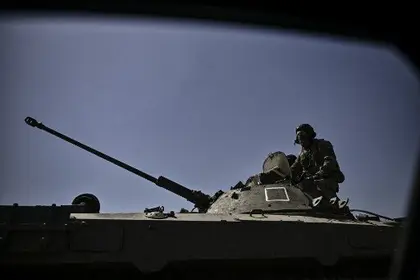Ukraine officials: RF attacks in Severodonetsk sector halted for now, massive artillery strikes continue
Ukrainian military officials claimed Russian Federation (RF) round attacks in the Severodonetsk sector failed to make significant progress, but fierce Kremlin artillery bombardments had not stopped, multiple news reports and government statements said on Monday, June 13.
JOIN US ON TELEGRAM
Follow our coverage of the war on the @Kyivpost_official.
General Valeriy Zaluzhny, commander of Ukraine’s military, said in comments made public by Ukraine’s Ministry of Defense (MoD) that Ukrainian Armed Forces (UAF) units in and around the city had fought off RF assaults, but that Ukrainians were facing an enemy “with a decisive advantage in artillery.”
Zaluzhny in a Sunday, June 12 telephone conversation told his US counterpart General Mark Milley that RF artillery holds a tenfold firepower advantage over Ukrainian artillery, and that Russia is operating up to seven battalion tactical groups (each numbering about 600-800 men at full strength) in the Severodonetsk sector, the MoD statement said.
The UAF is spread thinly across a front of 2,450 kilometers, of which 1,105 kilometers are sites of active fighting, Zaluzhny said.
Serhiy Haidai, head of the Luhansk regional defense command, in a June 12 YouTube statement said UAF infantry inside Severodonetsk was generally holding the line and “winning street battles”, but RF were using artillery “to blast block by city block”, to gain ground within the city.
The last 24 hours saw concerted RF attacks to the south of the city near the villages of Vrubivka and Kamyshevakha, and the town of Zolote, Haidai said.
According to the pro-Russia news platform Readovka, on Sunday, June 12 RF artillery destroyed the second of three bridges in Severodonetsk crossing the Siviersky Donets River. Reportedly, only a single road bridge now connects UAF defenses in the city to the adjacent locality of Lysychansk, and supply routes leading west.
The bridge’s destruction leaves UAF fighters and Ukrainian civilians in the Azot chemical plant, in Severodonetsk’s industrial sector, isolated and without means of escape across the river, the Kremlin-supported site claimed.
Haidai said supply lines were still open, but did not state directly whether the bridge was destroyed or not.
A Monday morning situation estimate made public by Ukraine’s Army General Staff (AGS) described the situation around Severodonetsk and Lysychansk as “extremely complicated”.
The RF objective in the areas is to capture both cities, complete the conquest of Ukraine’s Luhansk Region, and ideally, to surround and destroy defending UAF units in the vicinity.
According to army intelligence findings cited by the AGS, RF units have suffered serious casualties in the weeks of battle for Severodonetsk, leading to a reduction in the scale and tempo of ground assaults in the last week. Moscow has moved at least 80 combat vehicles and artillery pieces to the towns of Kremenna and Starobilsk, to the east of Severodonetsk to beef up further attacks.
As of the morning of Monday, June 13, RF units were making no ground attacks but Severodonetsk, Lysychensk and the nearby town of Toshkovka were under heavy shelling, the AGS statement said.
Military analyst Oleh Zhdanov in June 13 comments to the UNIAN news agency said the RF military leadership is consciously employing scorched earth tactics in its attacks against Ukrainian positions, and using its massive firepower advantage to level any town or village in the path of their forces.
Zaluzhny, in his conversation with Milley, repeated past appeals by most members of Ukraine’s national leadership, headed by President Volodymyr Zelensky, that if Ukraine is to stop the RF artillery onslaught, it critically needs more heavy artillery of its own, particularly howitzers and ammunition in the NATO-standard 155mm caliber.
According to news reports, the U.S. along with some NATO states have to date delivered or promised roughly 150 NATO-standard 155mm weapons systems.
The NATO guns began arriving in the field in May. Though individually effective, the NATO-standard cannon operated by the UAF remain heavily outnumbered by at least 1,000 RF howitzers and rocket artillery systems thought to be in Ukraine.
You can also highlight the text and press Ctrl + Enter



